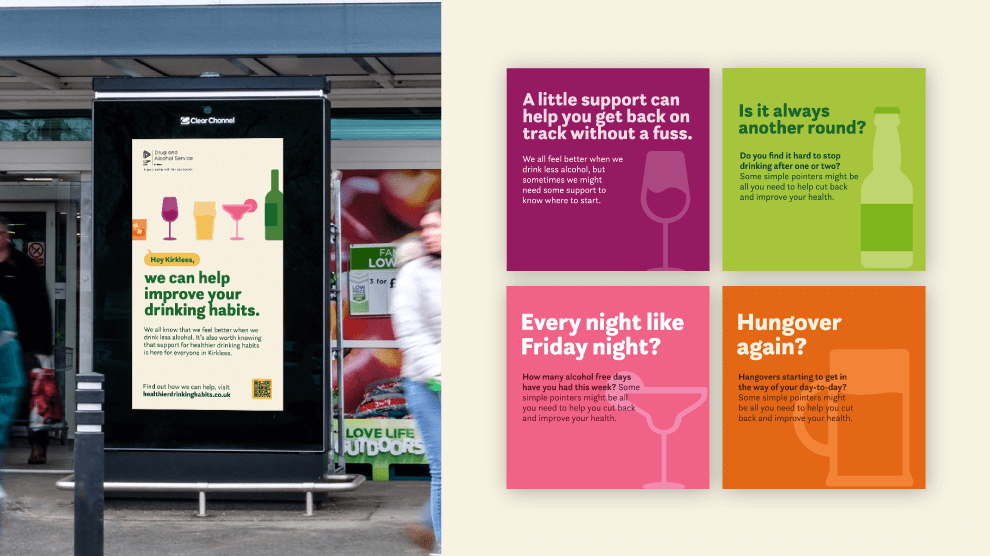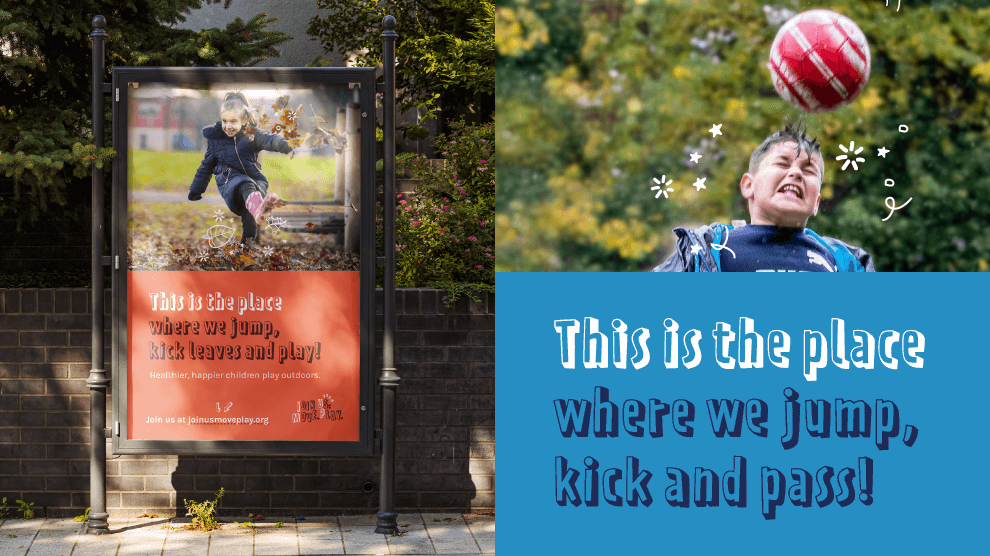Magpie’s blueprint to sustainable and ethical behaviour change
Real behaviour change starts with people, not assumptions
Behaviour change isn’t about persuasion, coercion, or sneaky nudges – it is about understanding people, their realities, and what truly matters to them. Change is not something we impose but something we co-create by listening, engaging, and working alongside the communities we serve.
Too often, organisations see the starting point of behaviour change as the moment a campaign or strategy is rolled out. As a result, behavioural interventions are fully designed inside four walls, built on assumptions about what motivates people rather than real conversations with them. But real change starts much earlier – it begins with paying attention, asking questions, and taking the time to understand people’s lived experiences. Top-down approaches may create short-term shifts but rarely lead to lasting, meaningful change.
We do things differently at Magpie, combining behavioural science and creative communications with community collaboration to design campaigns that empower, not manipulate or merely influence. We don’t just tell people how they should behave – we show them what change could mean for them and help them take ownership of their own journey.
Going beyond the behavioural strategy template
Many behaviour change strategies rely on theoretical models that assume they already understand why people act as they do. While these models offer useful frameworks, they often ignore the complex social, cultural, and emotional forces at play – elements deeply embedded within local contexts.
Research shows that interventions developed without community input frequently fail when put into practice (Michie et al., 2011). Nudges and choice architecture can work in controlled settings but often lose their effectiveness in real-world environments (Dolan et al., 2012). People’s decisions are shaped by their circumstances, personal histories, and social connections – factors that cannot be accounted for without truly listening to them first.
For example, our Healthier Drinking Habits campaign in Kirklees, commissioned by Kirklees Council, highlighted why traditional alcohol harm reduction approaches often fail to engage 45-64 year-olds who are most in need. Research generally suggests that those drinking above safe limits mostly lack awareness of health risks. However, by speaking directly with the target audience (45-64 year-olds in Kirklees), we uncovered a crucial insight: moderation, not abstinence, was the key message they were willing to engage with. Their drinking habits were deeply tied to social routines especially post-retirement, and a call for complete cessation felt unrealistic and alienating. This insight shaped the campaign’s entire strategy, shifting the tone towards achievable, non-judgemental changes rather than prescriptive messaging.

Magpie’s ‘people-first’ approach: Strengthening communities, not just strategies
We believe that behaviour change starts long before an intervention is launched – it starts with listening. Before we design strategies, we immerse ourselves in the realities of the communities we work with, understanding their challenges, values, emotions, and motivations.
One of our key strengths is our ability to engage under-reached and often overlooked communities. Traditional campaigns frequently miss these groups because they don’t invest the time to build trust and meaningful connections. We make sure everyone has a voice, ensuring that interventions are not just evidence-based but also culturally and socially responsive.
This principle was at the heart of our Guide to Healthcare project in south east London, where NHS South East London had commissioned us to create an illustrated tool that simplifies and improves equitable access to healthcare, and enhances the efficiency of NHS operations in their culturally and linguistically diverse region. We worked with marginalised communities – particularly non-native English speakers – to co-design a tool that simplified NHS access. While traditional healthcare communication materials are often text-heavy and difficult to understand, our research revealed that visual-first, intuitive design was critical for engaging this audience with limited English comprehension skills. Through multiple rounds of testing and iteration, we co-created an assistive tool that met their actual needs – not what we assumed they needed. This project is a clear example of how co-creation and inclusive design lead to better, more equitable outcomes.

Similarly, in our multi-phased Gambling Understood campaign for The Association of Directors of Public Health Yorkshire and Humber, we saw first-hand the power of working directly with the target audience. Conventionally, the ‘problem gambling’ messaging is to advise target audiences to be more careful of their own tendencies. This doesn’t recognise the highly addictive tactics used by the industry, and the shame and aversion that this kind of messaging can produce in the context of seeking support. Instead of conveniently relying on this ‘problem gambling’ messaging, we engaged young men who gamble and affected others to design a campaign that spoke their language. We learnt that traditional warning messages felt disconnected from their experiences and were often met with denial, ignorance or feelings of shame. So we shifted our approach to mirror the bold, engaging nature of gambling ads – while offering a simpler explanation of how the gambling industry and its products are deceptively drawing them in and keeping them hooked. This direct audience insight shaped everything, from the tone and visuals to the core messaging, ensuring that the campaign didn’t feel preachy but instead fostered self-reflection, normalised having conversations with friends and family, and promoted awareness of the tactics used by the gambling industry and of the support available.
Similarly, in our multi-phased Gambling Understood campaign, we saw first-hand the power of working directly with the target audience. Conventionally, the ‘problem gambling’ messaging is to advise target audiences to be more careful of their own tendencies. This doesn’t recognise the highly addictive tactics used by the industry, and the shame and aversion that this kind of messaging can produce in the context of seeking support. Instead of conveniently relying on this ‘problem gambling’ messaging, we engaged young men who gamble and affected others to design a campaign that spoke their language. We learnt that traditional warning messages felt disconnected from their experiences and were often met with denial, ignorance or feelings of shame. So we shifted our approach to mirror the bold, engaging nature of gambling ads – while offering a simpler explanation of how the gambling industry and its products are deceptively drawing them in and keeping them hooked. This direct audience insight shaped everything, from the tone and visuals to the core messaging, ensuring that the campaign didn’t feel preachy but instead fostered self-reflection, normalised having conversations with friends and family, and promoted awareness of the tactics used by the gambling industry and of the support available.

Our Gambling Understood campaign also highlighted the emotional power of being truly seen and heard. One of the most profound moments came when five individuals reached out to share their personal experiences of gambling harm after engaging with the campaign. This demonstrated that when interventions are co-created, they don’t just deliver a message – they create a safe space for people to acknowledge their own experiences and seek support.
Listening takes time, but it ensures that interventions address the real issues, not just the assumed ones. Behaviour change isn’t about quick fixes – it’s about understanding the deep-seated factors that shape decision-making and responding to them meaningfully.
Growing a tree for the ages: A Metaphor for sustainable, people-centred change
We often compare behaviour change to growing a tree. You can’t just drop a seed anywhere and expect it to thrive. It needs the right conditions, rooted in the soil of real human experience, to take hold and flourish.
As behaviour change specialists, our role is not to force growth but to nurture it. We create the conditions for change to take root, providing the right support – through research, community collaboration, and creative communication – so that behaviours can grow naturally and sustainably.A powerful example of this is JU:MP (Join Us: Move. Play.), a large-scale social movement aimed at increasing physical activity for young people in Bradford, funded by Sport England and commissioned by Active Bradford. Rather than imposing a top-down approach to exercise, JU:MP was co-created with local families, children, and young people, ensuring that the campaign was deeply relevant to their daily lives. By using Magpie’s 6 for Gold behaviour change framework, we developed engaging initiatives that encouraged families to be active together, reinforcing social norms and creating a ripple effect within the community. This led to 22,002 participants across eight neighbourhoods in 2023, improving health outcomes and reducing inactivity-related health risks – saving the NHS an estimated £2.42 million annually.

Like a strong tree, effective behaviour change should stand the test of time, adapting to challenges, becoming embedded in the culture, and continuing to bear fruit for years to come. The more we co-create interventions with the target audience, the greater the chance of resonating with them and bringing about a positive, lasting shift. Through 5 years of adaptive and collaborative behaviour change efforts, we ensured that JU:MP was embraced and sustained by the very people it was designed for. By involving community members as campaign ambassadors and designing interventions around real-life barriers to physical activity, this campaign proved that inclusive engagement builds lasting change.
The research is clear – when people feel involved in shaping change, they are more likely to embrace and sustain new behaviours (Deci & Ryan, 2000). This is why we work collaboratively with communities, making them active participants rather than passive recipients of change. When people have ownership over solutions, they don’t just comply with them – they champion them.
Let’s empower, together!
Lasting behaviour change isn’t about telling people what to do – it’s about empowering them to make informed, meaningful choices. When we shift from influence to empowerment, we move away from short-lived compliance and towards long-term transformation.
If you’re committed to making real, sustainable change, we’d love to hear from you.
Let’s give people the respect and inclusion they deserve, and ensure that behaviour change isn’t just implemented but also welcomed and embraced.
References
- Deci, E. L., & Ryan, R. M. (2000). The “what” and “why” of goal pursuits: Human needs and the self-determination of behavior. Psychological Inquiry, 11(4), 227-268.
https://doi.org/10.1207/S15327965PLI1104_01 - Dolan, P., Hallsworth, M., Halpern, D., King, D., Metcalfe, R., & Vlaev, I. (2012). Influencing behaviour: The mindspace way. Journal of Economic Psychology, 33(1), 264-277.
https://doi.org/10.1016/j.joep.2011.10.009 - Elbel, B., Kersh, R., Brescoll, V. L., & Dixon, L. B. (2009). Calorie labeling and food choices: A first look at the effects on low-income people in New York City. Health Affairs, 28(6), w1110-w1121.
https://doi.org/10.1377/hlthaff.28.6.w1110 - Michie, S., van Stralen, M. M., & West, R. (2011). The behaviour change wheel: A new method for characterising and designing behaviour change interventions. Implementation Science, 6(42).
https://doi.org/10.1186/1748-5908-6-42
